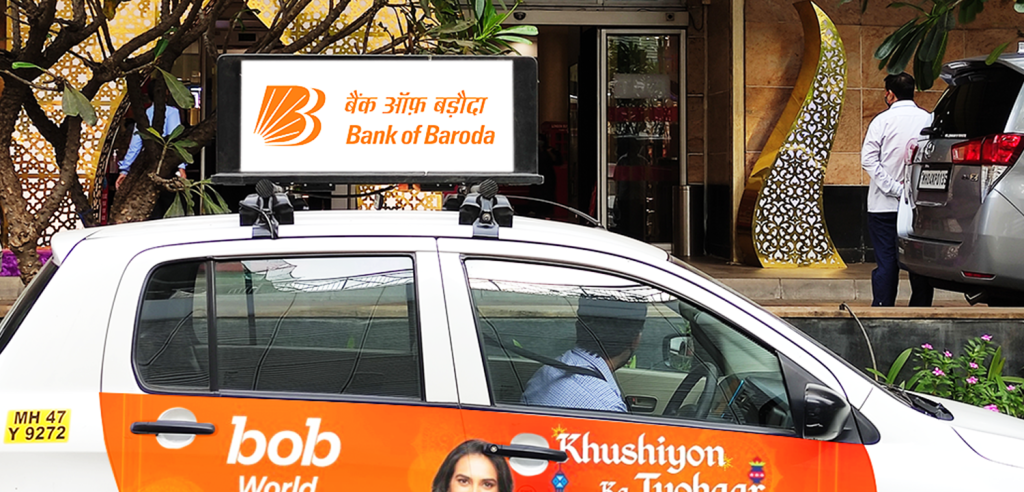Introduction
In the fast-paced world of transit marketing, taxi advertising has been one of the most effective and cost-efficient forms for startup companies. These motorized signs cruise through urban centers, attracting thousands of eyes each day, whether walking, lounging on a bus, or behind the wheel. For start-ups, this forward and backward movement facilitates the visibility of brand messages to the largest aggregate of eyeballs. Unlike print or static outlets, taxis move with your brand messaging into various zones where consumers can be targeted. Therefore, taxi advertising costs act as moving billboards that enhance recall and presence within the area. For any tight-budgeted start-up, a transit advertisement is a cost-effective marketing boon.
Understanding the Taxi Advertising Landscape
In transit advertising, taxi ads are among the most adaptable formats. Advertisers can select from a variety of styles, including taxi top signs, full-body wraps, rear-window ads, or even interactive digital screens. Both offer their advantages depending on your campaign goals and budgets. Full wraps make the most of both eyeballs and branding, while taxi tops are great for punchy short-term campaigns. As a small business trying to compete in this city, you can’t beat cabs for getting where you need to go and being seen along the way.” The nature of transit marketing is that it works in high-traffic areas, so there’s never a stop to the motion and view of your message.
The Advantages of Taxi Ads for Local Businesses
Building local familiarity is one of the biggest strengths that taxi ads have. They link brands with neighborhoods, events, and commercial areas in which people live and shop. With transit marketing, small businesses can achieve brand consistency without incurring thousands of dollars for large billboards or a media buy. Taxis run 24 hours a day, so your ad reaches daytime commuters and late-night revelers. This consistent repetition means it is easier for consumers to recollect your brand over time. There are very few options for advertising in the city that offer the mobility and repetition of taxi ads.
Cunning Eye-Catching Taxi Ads
Creativity is key to successful taxi ads and cross-advertising campaigns. Because they’re generally consumed on the move, images need to be bold, bright, and easy to read on the go. Easy to Read. The file folder labels feature bright colors, large letters, and a separate background, making the text clear and easy to read. This means that it is capable of getting its message across within a few seconds, piquing curiosity or interest. This includes your logo, website, or a QR code, allowing you to engage with viewers. And for startups, the art of design turns taxi advertising into memorable mobile brand communications that inspire trust and awareness.
Choosing the Right Routes and Fleet Partners
The art of successful transit marketing is all about placement, and that begins with selecting the right route. The right taxi companies can also ensure your taxi ads drive through the parts of a city that are most relevant to you and your audience. Consider transfers at business centers, where entertainment venues, universities, and shops are often concentrated. New names can attract customers in neighborhoods where they live or work. The repetition and ubiquity of taxi lines create consistency; your brand will be seen by commuters multiple times each day. When well executed, taxi ads transform local traffic into a captive audience on the move.
Integrating Taxi Ads with Digital Marketing
The world of transit marketing has kept pace with the digital age. Nowadays, many taxi ads also feature QR codes, social media accounts, or a code that represents a promotional hashtag to facilitate seamless connections between offline and online interactions. This results in a dynamic experience where prospective customers can instantly follow, share, or make a purchase. Startups can monitor engagement data to determine if campaigns are effective immediately. By combining traditional taxi ads with digital tools like mobile retargeting and social media ads, brands can offer an omnichannel experience. This combination increases exposure and can be converted into measurable outcomes.
Budgeting for Taxi Advertising Success
As with any new business, controlling costs is crucial, and that’s where transit marketing really shines. Taxi ads have flexible prices, depending on location, coverage, and the duration of the campaign. When compared to other types of outdoor advertising, taxis tend to cost less and offer greater reach. Startups can begin small, perhaps with a handful of vehicles, and expand as their names become more well-known. And don’t forget: Taxi ad providers often include design, placement, and upkeep as part of package deals. When smart planning, transit advertising through cabs returns you long term results at a fraction of the cost of conventional advertisements.
Measuring the Impact of Taxi Campaigns
5 Ways Taxi Ads Can Be Measured in Transit Marketing Analytics, October 10, 2017The effectiveness of taxi ads can be measured in several ways within transit marketing analytics. Businesses can monitor brand awareness through surveys, track website visitors, or measure forgiveness linked to specific ads. Today, many ad companies offer GPS-based impression data to estimate the number of people who likely saw the ad. Startups can take this data and refine their strategy, particularly in terms of route coverage. 6 This performance-based model changes transit advertising from a game of “guess and check” to one with measurable results. By tracking regularly, Taxi Advertising can become a creative and data-driven, hands-on growth tool.
Common Mistakes to Avoid in Taxi Declaring
Though there are many advantages to transit marketing, new users can make some mistakes. Poor design, excessive text, and poor positioning are all factors that can hinder the performance of taxi ads. Messages should be simple and direct. Just one big idea per ad is most effective. Neglecting target ridership when choosing routes is another frequent miscalculation. If your ads are never seen by anyone in your brand’s audience, even a brilliant design will fail. Startups should also avoid short-term campaigns; longer exposure creates better recall. Careful planning means that taxi advertising can deliver real, worthwhile numbers not merely stare-passing tackles.
Conclusion
In an oversaturated advertising space, transit marketing provides startups with a competitive advantage, both in the literal sense and in terms of mobility and visibility. With a little planning, taxi ads are effective brand storytellers that you send out to your customers every day. Every trip is an opportunity to solidify recognition and trust. When combined with digital tools, these drives take on a life of their own far beyond the streets. For small enterprises seeking a cost-effective promotional drive, transit marketing with taxis is an avenue that should be explored. Each cab serves as a mobile success story for your brand.
FAQs
What is transit marketing?
Transit marketing is moving vehicle outdoor adverts including taxis, buses and subways to catch daily commuters.
New business ask: Why are taxi ads good for the start-up?
TAXI advertising delivers constant exposure in metro areas promoting brand recall for both pedestrians and passengers.
How can transit marketing be fused with digital elements for startups?
Startups are able to blend transit marketing with QR codes, social media, and digital advertising to drive engagement.
Can small brands afford taxi ads?
Yes, taxi ads are both affordable and scalable the perfect advertising media for startups with limited budgets.
How long does it take to run a taxi ad project?
For best results,cross, campaigns should be scheduled for a minimum of 3-6 months to secure high brand recall.

